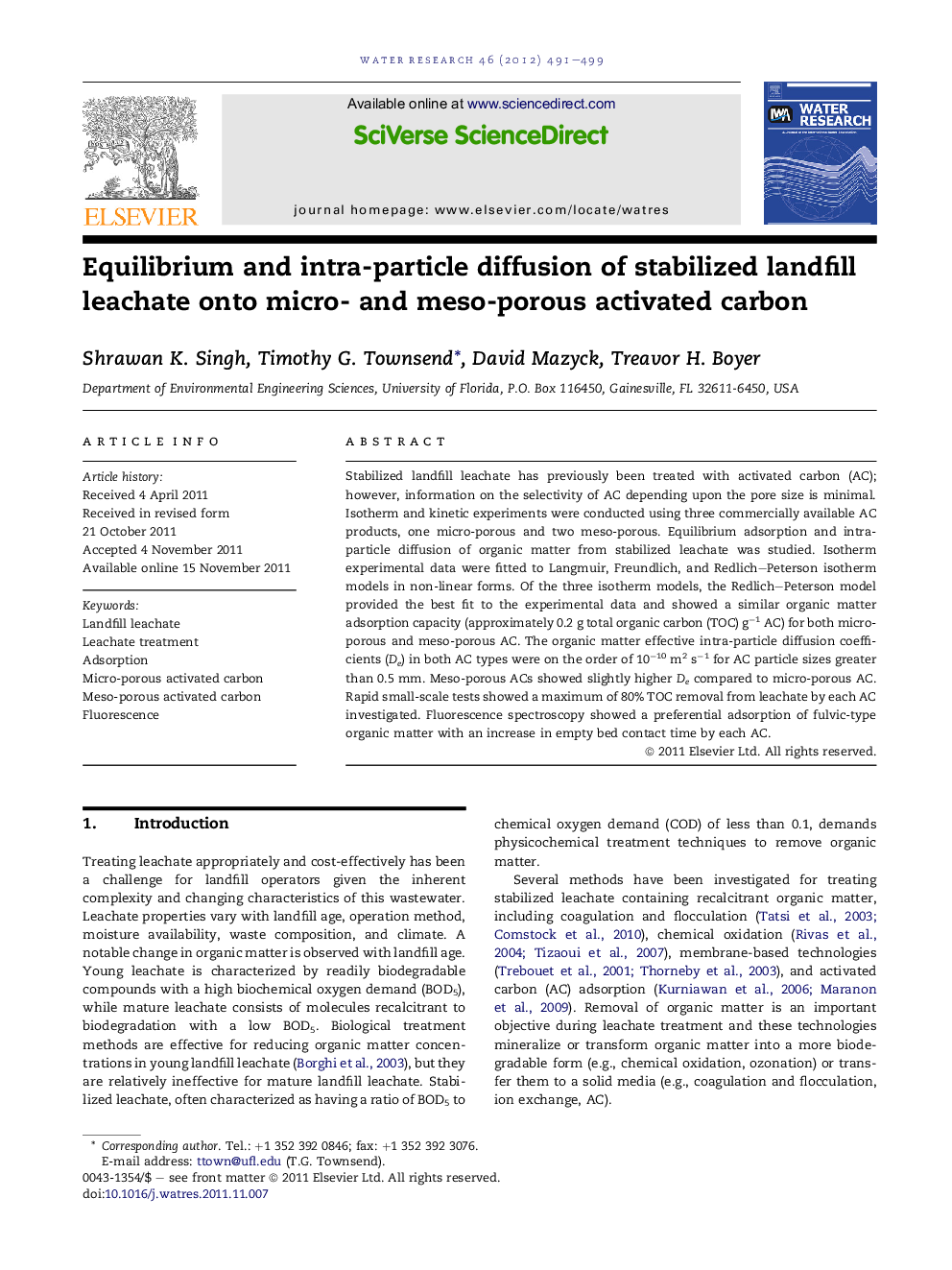| Article ID | Journal | Published Year | Pages | File Type |
|---|---|---|---|---|
| 4482406 | Water Research | 2012 | 9 Pages |
Stabilized landfill leachate has previously been treated with activated carbon (AC); however, information on the selectivity of AC depending upon the pore size is minimal. Isotherm and kinetic experiments were conducted using three commercially available AC products, one micro-porous and two meso-porous. Equilibrium adsorption and intra-particle diffusion of organic matter from stabilized leachate was studied. Isotherm experimental data were fitted to Langmuir, Freundlich, and Redlich–Peterson isotherm models in non-linear forms. Of the three isotherm models, the Redlich–Peterson model provided the best fit to the experimental data and showed a similar organic matter adsorption capacity (approximately 0.2 g total organic carbon (TOC) g−1 AC) for both micro-porous and meso-porous AC. The organic matter effective intra-particle diffusion coefficients (De) in both AC types were on the order of 10−10 m2 s−1 for AC particle sizes greater than 0.5 mm. Meso-porous ACs showed slightly higher De compared to micro-porous AC. Rapid small-scale tests showed a maximum of 80% TOC removal from leachate by each AC investigated. Fluorescence spectroscopy showed a preferential adsorption of fulvic-type organic matter with an increase in empty bed contact time by each AC.
► Activated carbon (AC) was used to remove organic matter (OM) from stable leachate. ► Micro-and meso-porous AC were used, providing a similar capacity for OM adsorption. ► Meso-porous AC provided faster adsorption than micro-porous AC. ► Increasing empty bed contact time (EBCT) raised total organic carbon removal (≤80%). ► Fulvic-like OM preferentially adsorbed onto both AC types as EBCT increased.
